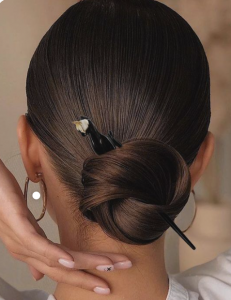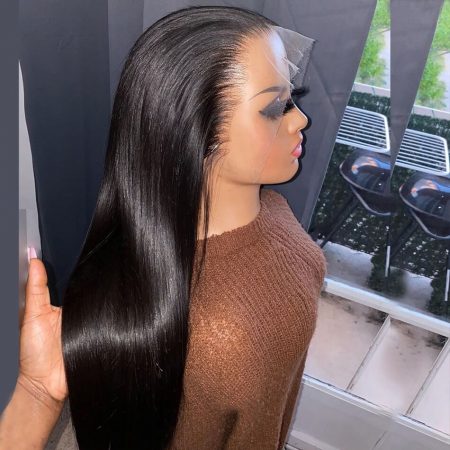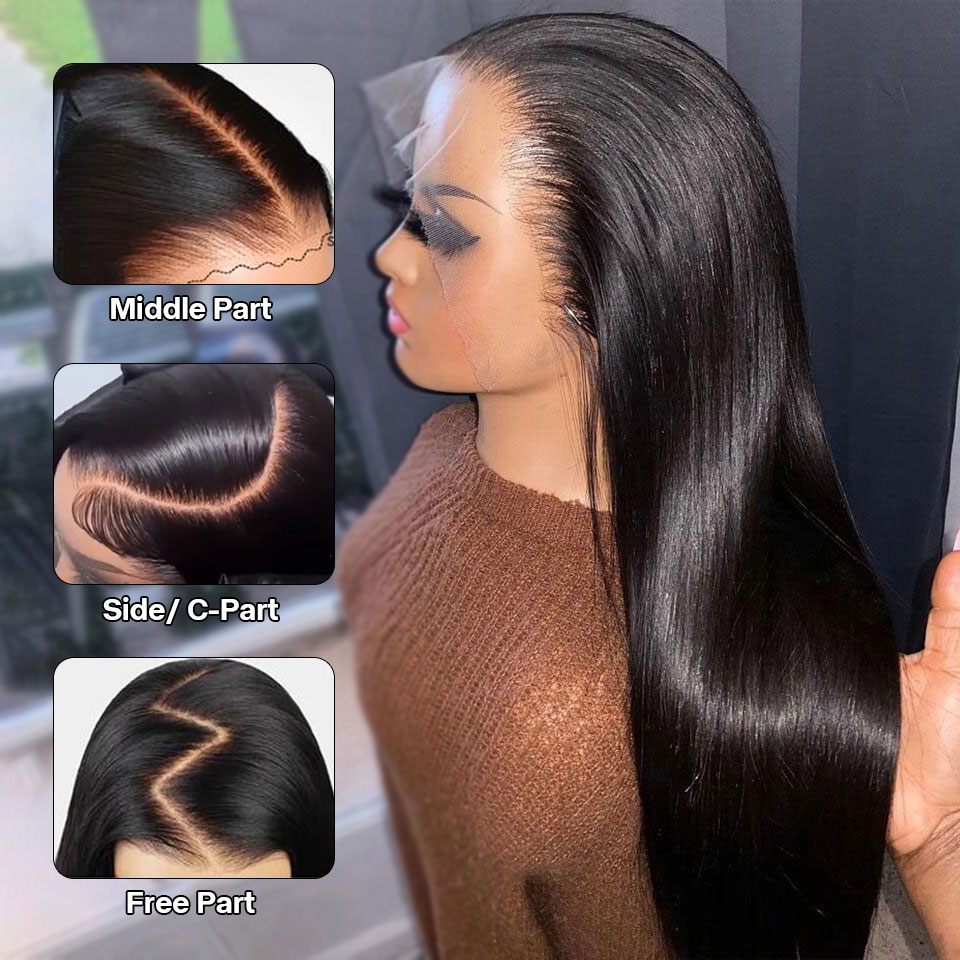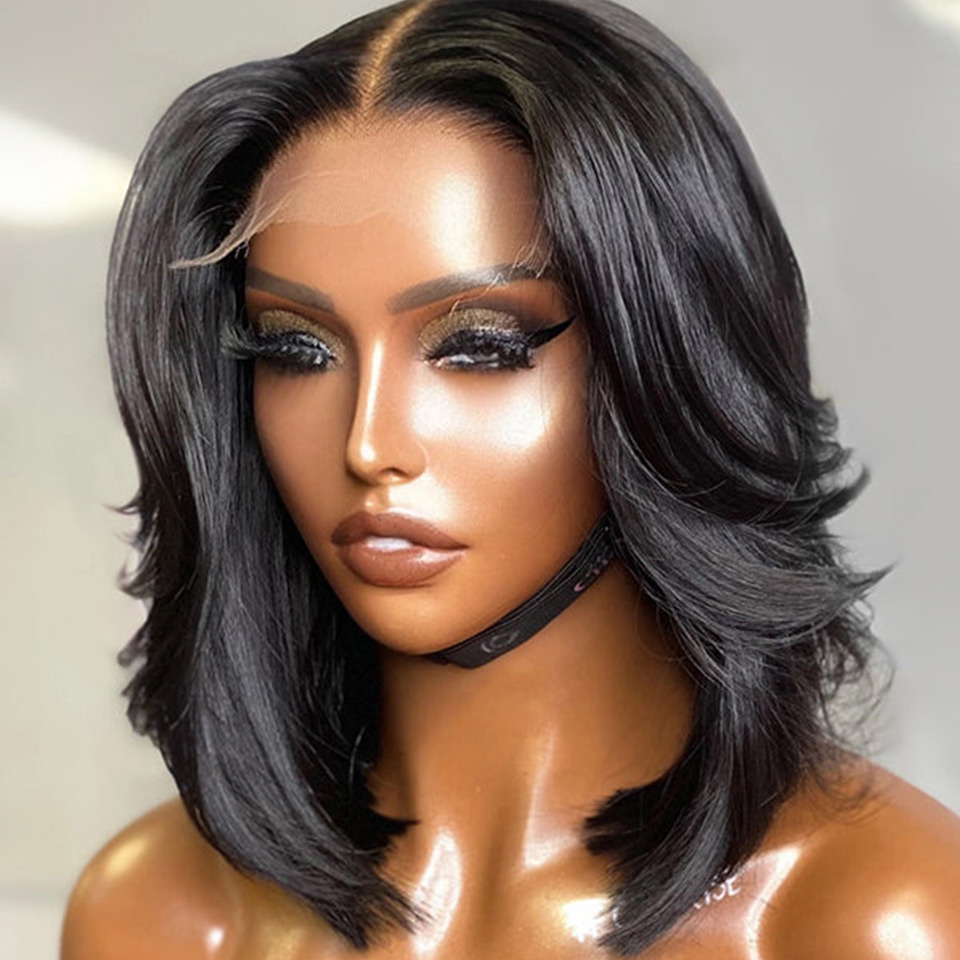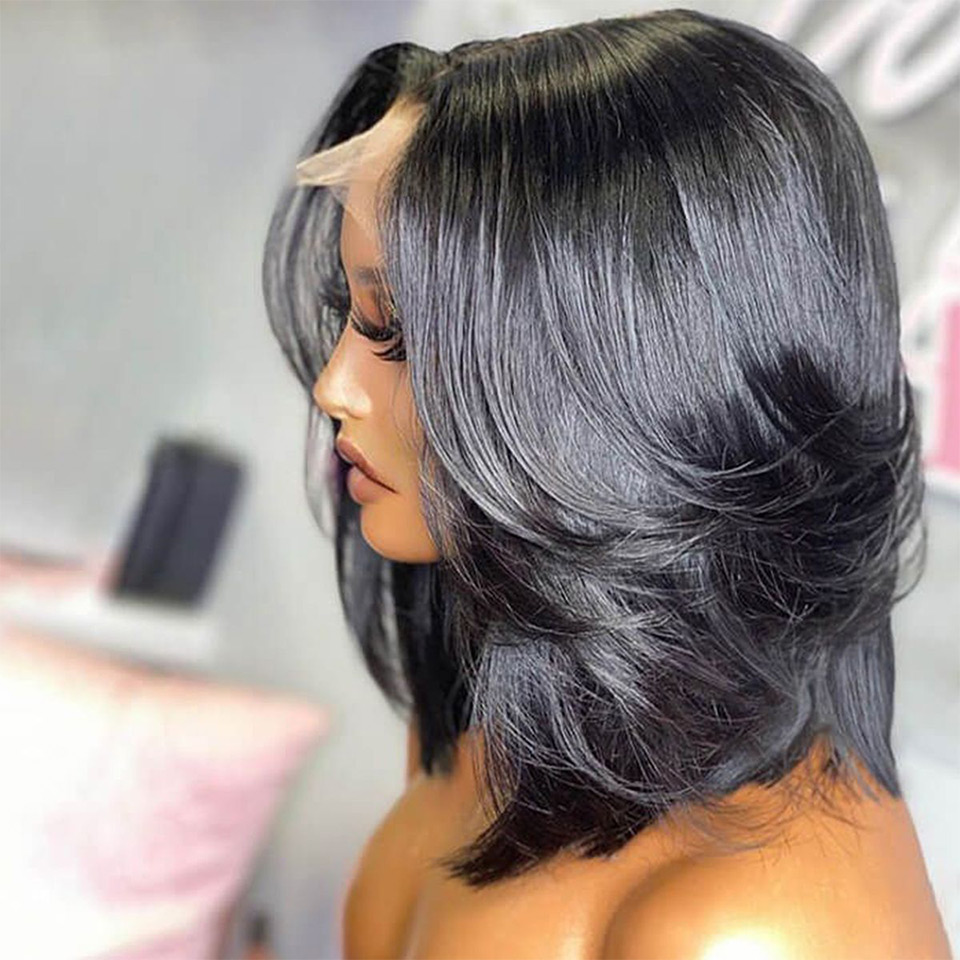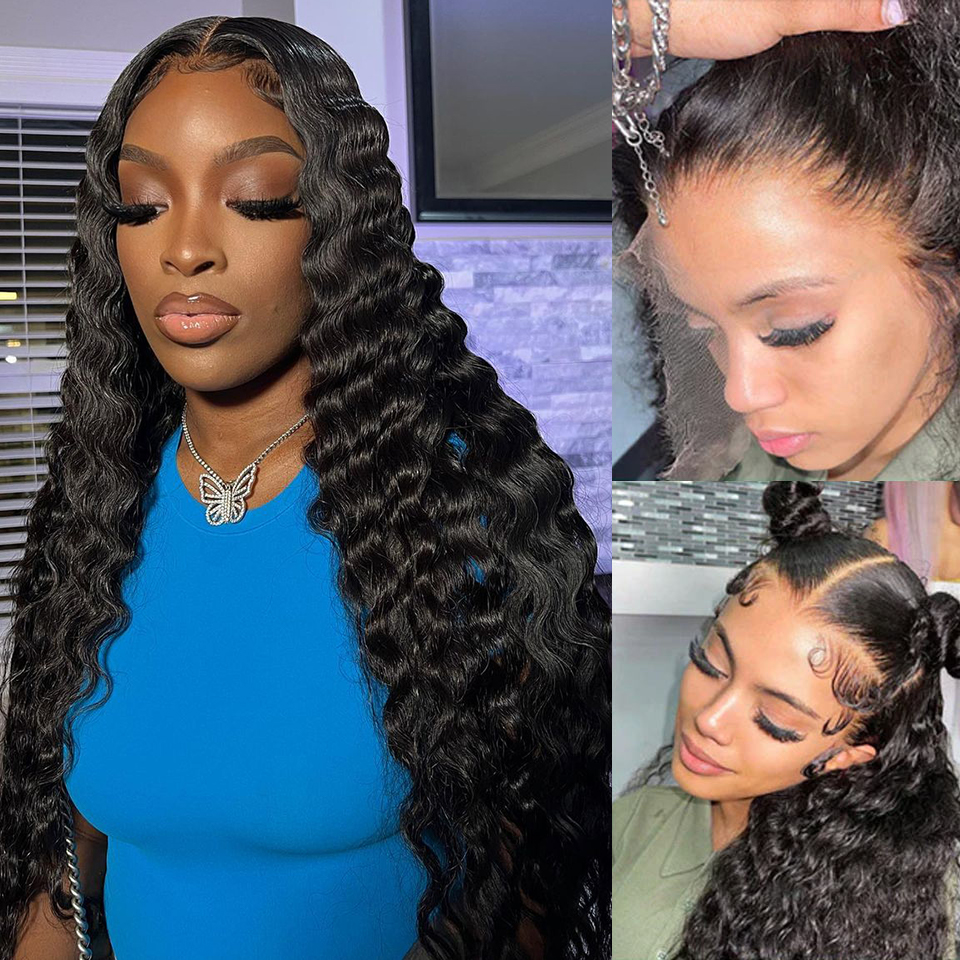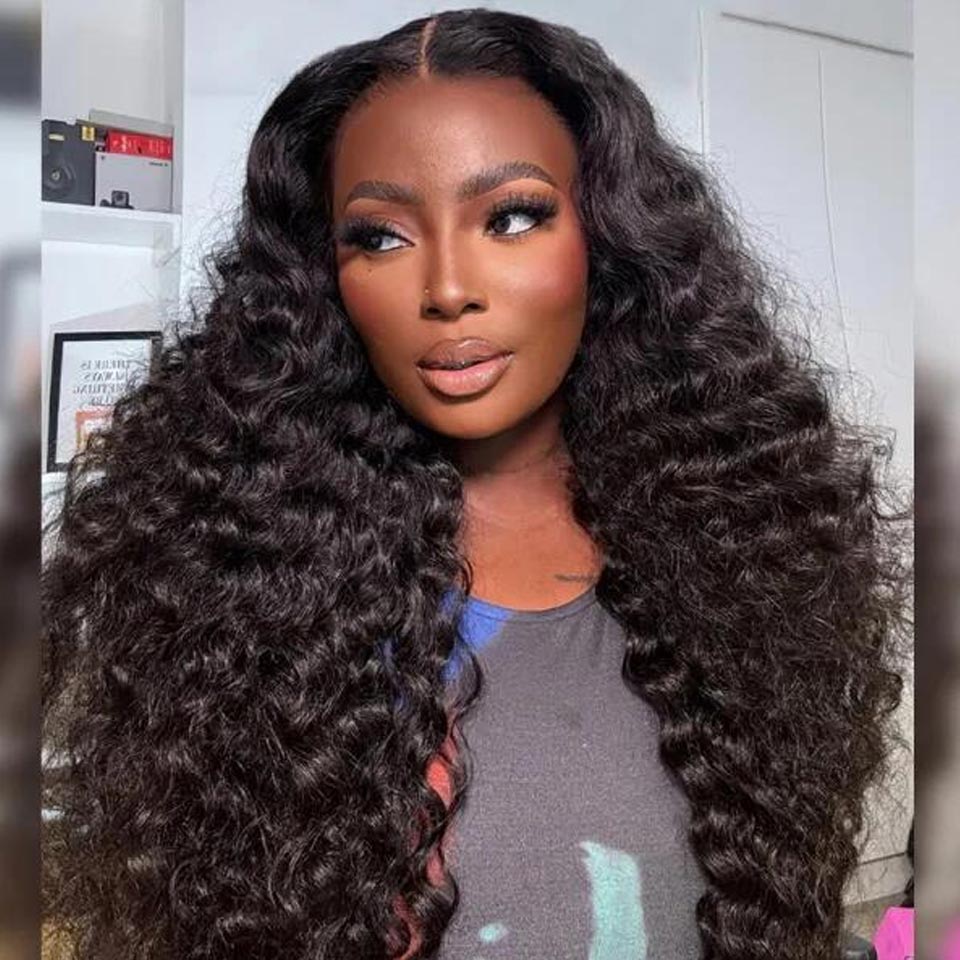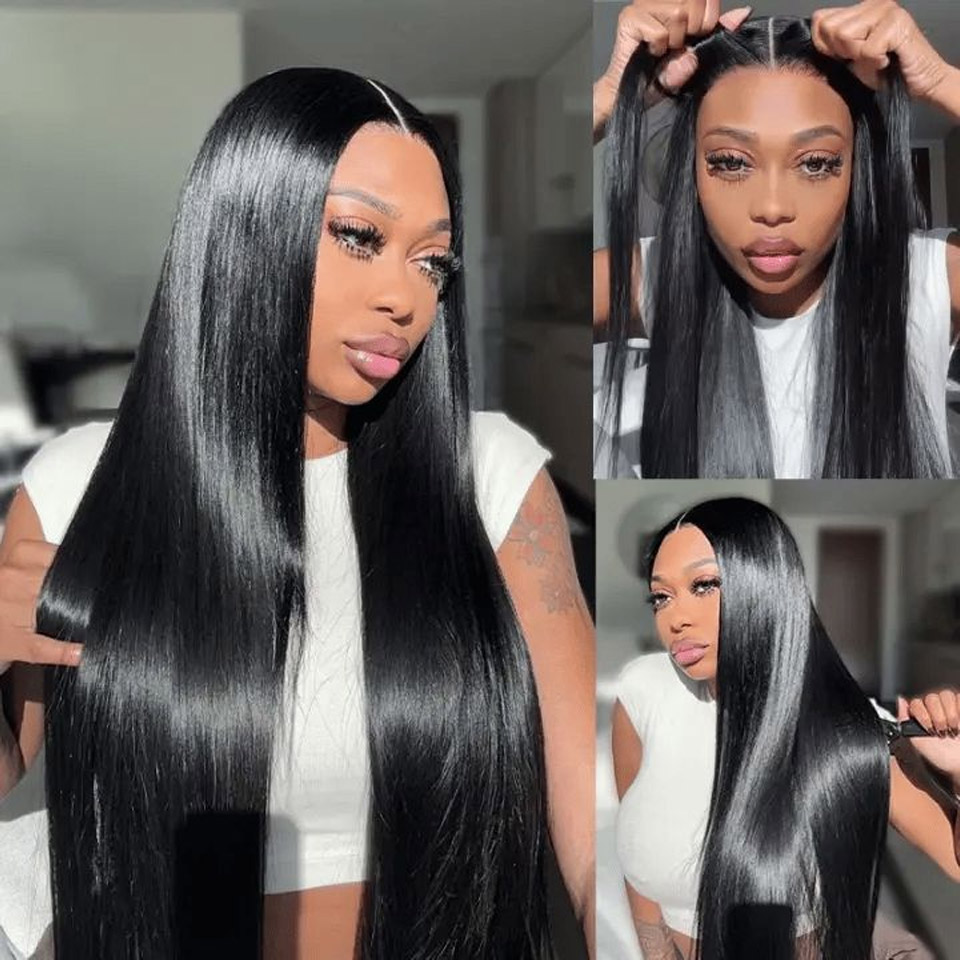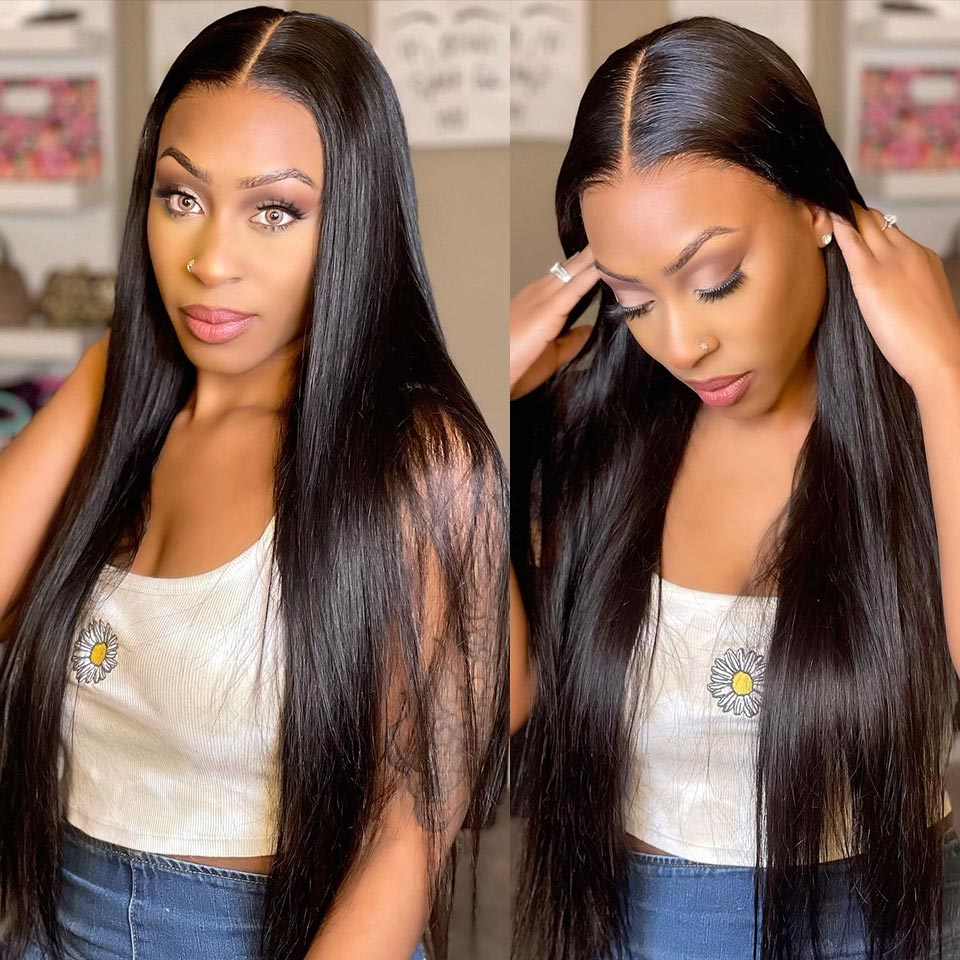Deep wave wigs stand out for their luxurious and voluminous curls. However, with great beauty comes great responsibility – maintaining the allure of a deep wave wig requires careful attention, particularly when it comes to detangling. In this comprehensive guide, we will delve into the intricacies of detangling deep wave wigs, ensuring that you can flaunt those mesmerizing waves with confidence and ease.
Understanding Deep Wave Wigs.
Before embarking on the journey of detangling, it’s crucial to comprehend the nature of deep wave wigs. Deep wave wigs are crafted with meticulously designed curls that emulate natural waves cascading down. These curls are tighter and more defined compared to other wig styles like loose waves or body waves. The arrangement of these curls can pose challenges when it comes to maintaining their integrity while detangling.
Essential Tools for Detangling.
To embark on your detangling journey, you’ll need an arsenal of tools at your disposal:
Wide-Tooth Comb: A wide-tooth comb is your best friend when it comes to detangling deep wave wigs. Its broad teeth help prevent excessive pulling and breakage of the delicate curls.
Detangling Brush: A brush designed specifically for detangling can help gently work through knots and tangles without causing damage to the wig’s curls.
Spray Bottle with Water: Keeping a spray bottle filled with water on hand can be immensely helpful. Spritzing water onto the wig can provide moisture, making the curls more pliable and easier to detangle.
Leave-In Conditioner: A lightweight leave-in conditioner can aid in softening the hair strands, reducing friction, and facilitating the detangling process.
Silk or Satin Scarf/Pillowcase: Silk or satin materials are gentler on the hair and reduce friction, helping to maintain the integrity of the curls.
Step-by-Step Detangling Process.
Detangling a deep wave wig requires patience, gentleness, and a systematic approach. Here’s a step-by-step process to ensure a successful detangling session:
Step 1: Preparation.
Before you start detangling, make sure your wig is clean. Gently wash and condition it, allowing the conditioner to add a layer of slip to the hair. This will make the detangling process smoother.
Step 2: Spritz with Water.
Fill your spray bottle with water and mist the wig lightly. The goal is to add enough moisture to soften the curls without saturating the hair.
Step 3: Apply Leave-In Conditioner.
Apply a dime-sized amount of leave-in conditioner to your palms and distribute it evenly through the wig. This step provides extra slip and helps in managing tangles.
Step 4: Divide and Conquer.
Divide the wig into manageable sections. Start by parting the hair down the middle, then create horizontal sections. Use hair clips to secure the sections you’re not currently working on.
Step 5: Detangle with Fingers.
Begin detangling with your fingers. Gently separate any large knots or tangles using your fingertips. Be patient and avoid tugging forcefully.
Step 6: Wide-Tooth Comb.
After using your fingers, pick up your wide-tooth comb. Start from the tips of the hair and work your way upward, gradually moving closer to the roots as the tangles loosen. Always use a downward motion and avoid combing from the roots to the tips, as this can cause unnecessary tension on the curls.
Step 7: Detangling Brush.
If you encounter stubborn knots that the wide-tooth comb couldn’t tackle, switch to a detangling brush. Work through the knots slowly and gently, using short strokes.
Step 8: Repeat and Rinse.
Continue these steps section by section until you’ve detangled the entire wig. If necessary, apply more water and leave-in conditioner as you go along. Once the detangling is complete, rinse the wig thoroughly to remove any remaining conditioner.
Step 9: Blot and Air Dry.
After rinsing, gently blot the wig with a microfiber towel to remove excess water. Allow the wig to air dry on a wig stand or mannequin head. Avoid using heat styling tools on wet hair, as this can cause damage.
Step 10: Final Touches.
Once the wig is completely dry, gently fluff the curls with your fingers to restore volume and bounce. If desired, you can use a lightweight hair oil to add a natural sheen to the curls.
Maintenance Tips to Prevent Tangles.
Prevention is key when it comes to maintaining the beauty of your deep wave wig. Here are some maintenance tips to help prevent tangles in the first place:
Sleep Protection: Wrap your wig in a silk or satin scarf or use a silk or satin pillowcase when sleeping. This reduces friction and minimizes tangles.
Storage: When you’re not wearing your wig, store it on a wig stand or mannequin head to help preserve its shape and prevent tangling.
Avoid Overstyling: While it’s tempting to experiment with various hairstyles, excessive manipulation and styling can lead to tangles. Limit the use of heat styling tools and tight updos.
Regular Detangling: Make a habit of gently finger-detangling your wig every day. This prevents knots from becoming severe and makes the detangling process more manageable when you decide to thoroughly detangle.
Trimming: Regularly trim any split ends or damaged sections. This not only keeps the wig looking fresh but also prevents tangles from spreading.

Do and Don’t if you wash your deep wave wig free of tangle.
Washing a deep wave wig can be a delicate process, especially when you want to maintain its tangle-free allure. Here’s a list of do’s and don’ts to ensure that you wash your deep wave wig effectively without introducing tangles:
Do’s:
Do Detangle Before Washing: Gently finger-detangle the wig before you start the washing process. This helps to remove any existing knots or tangles, making the washing process smoother.
Use Lukewarm Water: When wetting the wig, use lukewarm water to avoid excessive swelling of the hair strands, which can lead to tangling.
Use a Mild Shampoo: Choose a sulfate-free and moisturizing shampoo. Apply the shampoo to the scalp area and allow the suds to cleanse the rest of the hair as you gently run your fingers through it. Avoid aggressive scrubbing, as it can cause tangling.
Apply Conditioner to the Ends: Concentrate the application of conditioner on the mid-lengths and ends of the hair. This helps to keep the curls soft and hydrated without weighing them down.
Rinse Thoroughly: Make sure to rinse out all the shampoo and conditioner from the wig thoroughly. Residue left behind can cause tangling over time.
Use a Wide-Tooth Comb for Even Distribution: After applying conditioner, use a wide-tooth comb to gently distribute the conditioner through the hair. This ensures that the product is evenly spread without causing tangles.
Pat Dry with a Microfiber Towel: After rinsing, gently pat the wig dry with a microfiber towel to remove excess water. Avoid rubbing or wringing the hair, as this can cause tangling.
Air Dry: Allow the wig to air dry on a wig stand or mannequin head. Avoid using heat styling tools on wet hair, as this can damage the curls and lead to tangles.
Finger Comb While Drying: As the wig dries, occasionally run your fingers through the curls to help them maintain their shape and prevent clumping.
Use a Lightweight Oil or Serum: Once the wig is completely dry, you can apply a lightweight hair oil or serum to add shine and further reduce the likelihood of tangling.
Don’ts:
Don’t Scrub Aggressively: Avoid scrubbing the hair vigorously while washing, as this can lead to tangles and disrupt the curl pattern.
Avoid Hot Water: Hot water can strip the hair of its natural oils and lead to frizz and tangles. Stick to lukewarm water for washing.
Don’t Pile the Hair Up: When washing, avoid piling the hair on top of your head like you might with natural hair. This can cause tangling and stretching of the curls.
Don’t Use Heavy Styling Products: Avoid using heavy styling products like gels or creams that can weigh down the curls and make them prone to tangling.
Say No to Rough Towel Drying: Avoid rubbing the hair vigorously with a regular towel, as this can create friction and lead to tangles. Instead, gently pat the hair dry.
Avoid Heat Styling on Wet Hair: Using heat styling tools on wet hair can cause damage to the cuticles and result in tangles. Always make sure the wig is completely dry before using heat.
Don’t Sleep with Wet Hair: Sleeping with wet hair can lead to severe tangling. Make sure the wig is completely dry before going to bed or use a silk/satin scarf or pillowcase.
Don’t Brush When Wet: Brushing wet hair, especially deep wave curls, can cause stretching and breakage. Always detangle the hair before washing and allow it to dry before brushing.
Avoid Overhandling: Excessive manipulation of the hair while it’s wet can lead to tangling. Handle the wig gently during and after washing.
Don’t Skip Regular Maintenance: Even if your wig is tangle-free after washing, it’s important to continue regular maintenance practices to prevent tangles from developing over time.
Final Thoughts.
Detangling a deep wave wig requires a delicate touch and a patient approach. By using the right tools, following a systematic detangling process, and incorporating preventive maintenance into your routine, you can enjoy the mesmerizing allure of deep waves without the hassle of severe tangles. Remember, a little care goes a long way in maintaining the longevity and beauty of your deep wave wig. So, embrace those luxurious curls with confidence and pride!







